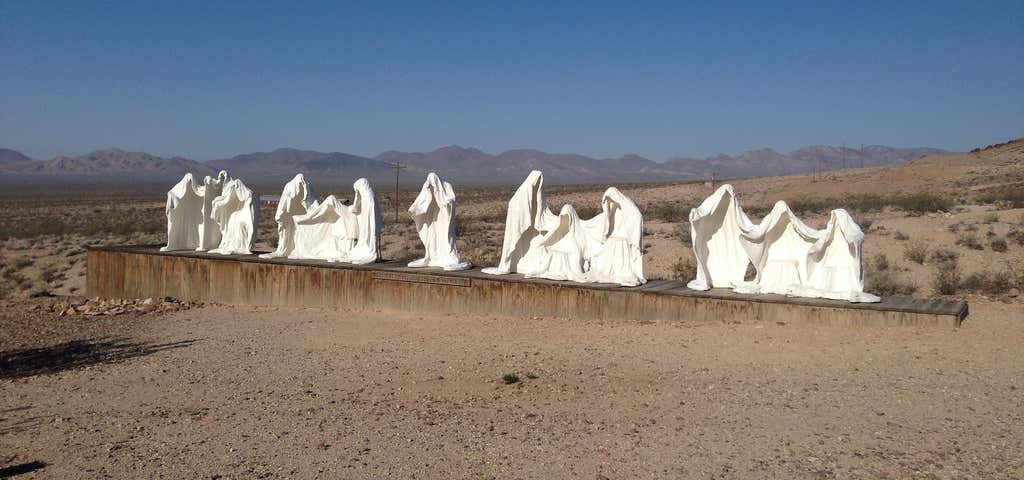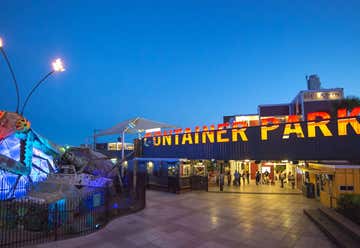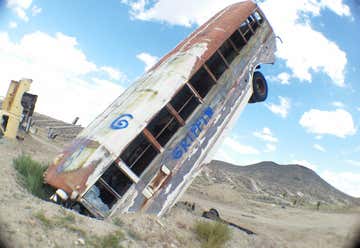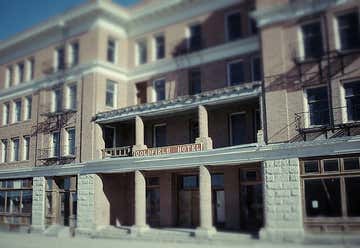When it comes to offbeat things to do in Nevada, Las Vegas is up there... but it's also just the beginning, both physically and metaphorically. Metaphorically, because it's the most obvious destination for weird fun in Nevada, and physically, because it's the starting point for the Free Range Art Highway, aka US Route 95, one of the country's strangest road trips. Sleepy ghost towns and outsider art line the road between Vegas and Tonopah and all the way up into Fernley.
If you start just West of Nevada, you can catch one of the more popular offbeat art installations in the area. It's called "Seven Magic Mountains", and the highly Instagram-able piece is the work of renowned Swiss artist Ugo Rondinone. The stacks of neon-colored, car-sized boulders represent a “creative expression of human presence in the desert.” The location (in the middle of nowhere, but also off a highway connecting LA and Vegas) and their resemblance to cairns, which were used to guide travelers centuries ago, are very intentional. When you visit, you can take advantage of the guide-by-cell phone setup by calling the number listed on the informational signs for more artist context.
If you're looking for unique art in Vegas, skip the Strip and head to Fremont's Downtown Container Park. In addition to the upscale and casual dining options, boutique shops, treehouse play area, and many events, there's also an epic, 40-foot-tall praying mantis sculpture that watches over everything. Enjoy a gourmet hot dog at Cheffini's, authentic tacos from Pinches, or a craft cocktail from Oak & Ivy while you're here!
Once you've set the neon of Vegas safely in your rearview mirror, head for Beatty. Nearby, you'll find the ghost town of Rhyolite. It's hard to imagine looking at the crumbling ruins of what remain, but it was once a bustling boomtown where gold miners settled. In its heyday in 1904-1906 brought to town hotels, stores, a school for 250 children, water mains, an ice plant, electricity, a red light district (of course) foundries and machine shops, an ice cream parlor, an opera house, pool halls, and a miner’s union hospital. Picture it: 50 saloons, 35 gambling tables, 19 lodging houses, 16 restaurants, 6 barbers, and a bathhouse. There were even a stock exchange and board of trade.
A financial panic in 1907, however, brought about the town's demise. By 1910, the population had dipped to 600 residents. In 1911, the main mine in town closed, and in 1916, the power plant shut off for good. Some of the buildings are privately owned, while some sit abandoned. When nearby Death Valley National Park was established in the 1930s, Rhyolite became a tourist attraction. One must-visit building is the bottle house, built by a miner named Tom T. Kelly in February 1906 from 50,000 discarded beer and liquor bottles. It was restored by Paramount, which was using Rhyolite as a filming location.
Directly adjacent to Rhyolite is the Goldwell Open Air Museum. It was founded in 2000, but its origins lie in the 1984 installation of two pieces by Albert Szukalski. The first is one of the museum's most famous attractions; it's called The Last Supper, and features ghost-like shapes (formed from plaster-soaked burlap draped over live models) arranged like the figures in DaVinci's painting. The second piece depicts the same kind of ghost-like figure with a bicycle. Between 1984 and 2007, other sculptures have been added to the museum, such as Szukalski's Desert Flower, an assemblage of chrome car parts found in the desert; Hugo Heyrman's Lady Desert: The Venus of Nevada, a pixel-inspired cinderblock lady; and Fred Bervoets' Tribute to Shorty Harris, a memorial to the prospector who struck gold and led to the founding of Rhyolite. You can also find the remains of Bullfrog, a smaller mining camp, on the property as well.
Head a bit further north to another ghost town and another art installation tucked away in the desert. The International Car Forest of The Last Church is a sort of art gallery that uses cars instead of canvas. It's the largest car art exhibit in the country (take THAT Cadillac Ranch and Carhenge), and as you wander, you can see them stacked, stuck into the ground, and painted in all kinds of odd styles. And as for the name, the "International Car Forest" part comes from the fact that its meant to be like a National Forest, where people can come visit freely... except, you know, made of cars instead of trees. The "Last Church" part is a nod to the website and philosophical beliefs of the Forest's founder, Goldfield native Mark Rippie.
Goldfield is another ghost town that is a shadow of its former self. By 1904, which was within two years of gold being discovered nearby, it was the largest city in the state, with a population of 20,000... and it was one of the richest, too. That year, it accounted for 30% of the state's gold production.
The town played host to a huge cast of characters, including con man George Graham Rice, whose Sullivan Trust Company and mining stocks collapsed in 1907, causing the town's bank to fail... he fled town shortly after. Famed lawmen Wyatt and Virgil Earp came to town in 1904 when Virgil was hired to be the sheriff. Virgil died of pneumonia not too long after arriving, and Wyatt left. There was also filthy rich millionaire George Wingfield, who made a fortune founding the Goldfield Consolidated Mining Company and built the opulent Goldfield Hotel. The Hotel, which was the third Goldfield Hotel built on the location (the other two both burned down) was the fanciest in the state, with a crystal chandelier, private bathrooms, black leather, and gilded columns. Champagne flowed down its front stairs during its grand opening. It's still standing today, and is reported to be haunted.
The mines didn't last forever, though, and the largest company left town in 1919. A 1923 fire from a moonshine still that exploded burned down almost all of the town, except for the hotel, the school, and a few other buildings. Some people still live in the town, and some small gold mining operations are ongoing. Stop by for a ghost tour of the Hotel, and stop in for a drink at the 112-year-old Sante Fe Motel and Saloon, where you can have "Nevada's Meanest Bartender" pour you a drink.
You could end the journey in Goldfield, or you could continue on your pilgrimage to Fernley. Why Fernley, you ask? Because Fernley is a part of Burning Man's "Big Art for Small Towns" program, which places pieces from the famed annual art and community gathering in Nevada's Black Rock Desert. It's a funky spot to check out; the gazebo is topped with mosaiced leaves made from flattened bottle caps, and there's a tortoise carved from boulders from a local quarry.








